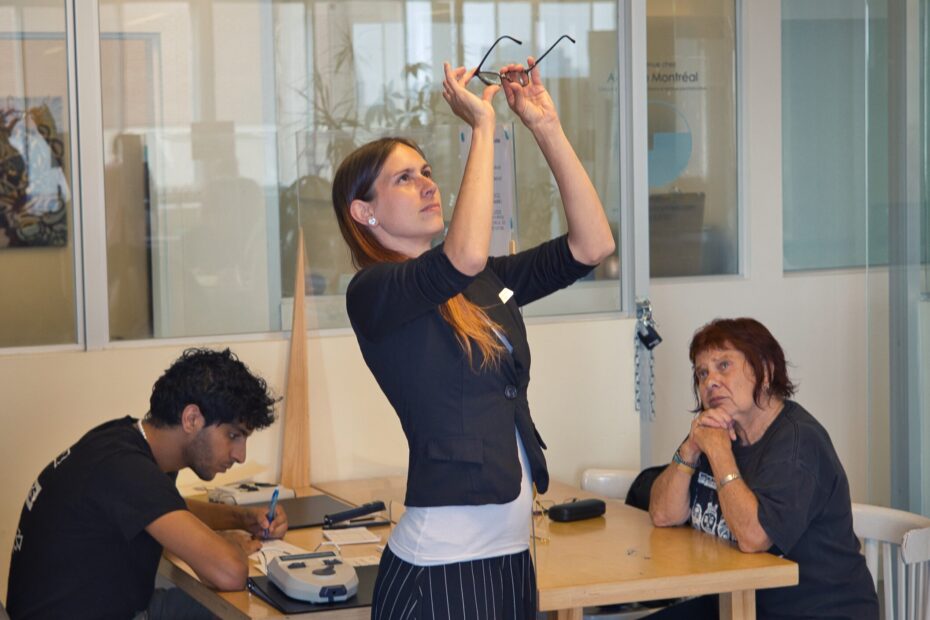We have heard a lot about peripheral defocusing lenses in recent years (such as MiyoSmart, MyoVision, Stellest™, etc.). These lenses offer themselves as some kind of miracle solution against myopia. Let's take a look at how they work, starting with some eye-opening (ha!) data:
- Between 30 and 40% of the world's population has myopia
- Estimates say it will reach 50 % by 2050
So, it’s a common and important health problem, which means it represents important market shares! No wonder companies are putting out new technologies!
What are myopia control lenses ?
Myopia control technology claims to reduce the development of myopia based on the following idea: through conventional corrective lenses, what the wearer sees fully hits their retina. What wearers see on the periphery (on the sides) lands behind their retina and therefore looks blurry. The hypothesis is that the eye "tries" to change shape to capture what lands behind their retina. These new technology lenses are said to be designed to correct what falls into this blurry periphery to reposition it correctly on the retina, which would mean that the eye would no longer have to “try” and change its shape.
Do These Glasses Give the Expected Results?
Well, we don't really know yet.
Stop us if you've heard this before, but when it comes to health, we need evidence to know if things work or not. The problem is that the scientific evidence we have at the moment about these lenses is not enough to confirm that the technology can in fact slow down how myopia progresses.
A few studies have said the technology was "promising," but their methodology is a little questionable. Some more serious studies are underway, but we’re still waiting for them to publish their results.
Our doubts
What if this hypothesis is wrong? It’s almost like saying that if you buy a shoe that’s a size too big, your foot will grow to fill it. Hm Just like everything that’s said about blue light filters, it’s important for us to keep in the mind the “power of persuasion” of certain lens makers hoping to capitalize on this huge market share.
So What Can Be Done to Fight Myopia?
On vous l’a déjà dit : aller dehors ! Plusieurs études suggèrent qu’une activité extérieure quotidienne peut ralentir la progression de la myopie. Certains pays d’Asie ont d’ailleurs mis en place des outdoor “anti-myopia” breaks for school children. This way, accommodation efforts related to near vision are reduced.
The only problem, from a marketing standpoint, is that it's free.
Some studies have also been testing bifocal lenses or lenses with a prism to reduce accommodation in near vision. The classic practice still suggests that children and adolescents who see their myopia increase rapidly should continue to wear their previous pairs (therefore less strong and requiring less accommodation) when they can, that is to say in near vision.
The only problem, from a marketing standpoint, is that it doesn't make people consume more.
Conclusion
The industry has tried to slow the progression of myopia before with things like bifocal/progressive lenses, anti-fatigue lenses, the medication atropine, or rigid lenses. All these solutions were, at one time or another, presented as the “miracle” solution To date, the results remain mixed..
That's why we tend to be cautious when a new solution hits our radar. Our philosophy is: let's wait for reliable results. We will rejoice along with everyone if one day myopic control glasses turn out to be the miracle solution. But until then, we choose to remain skeptical, if only because we don't want our customers to spend their money on something still iffy.

